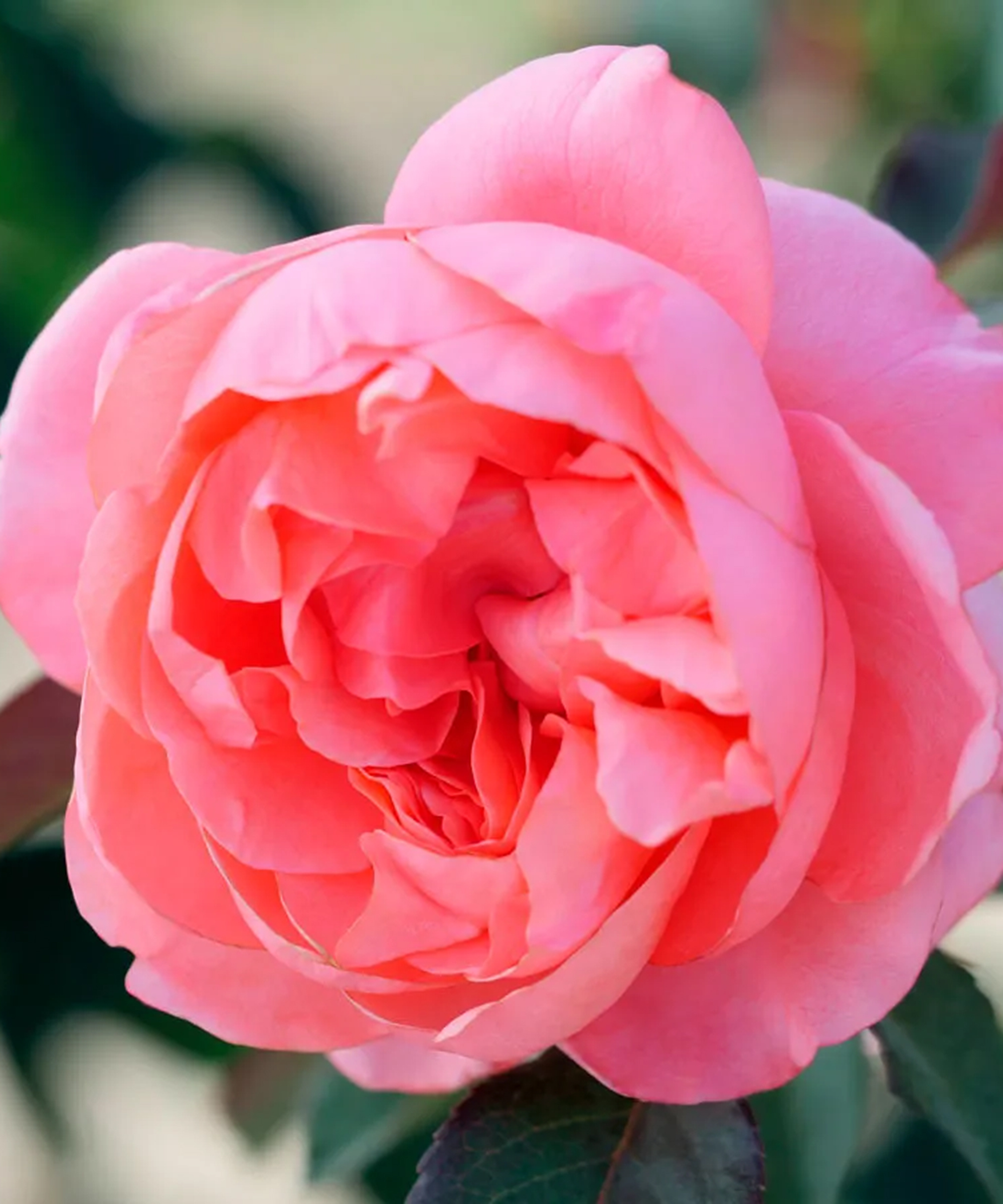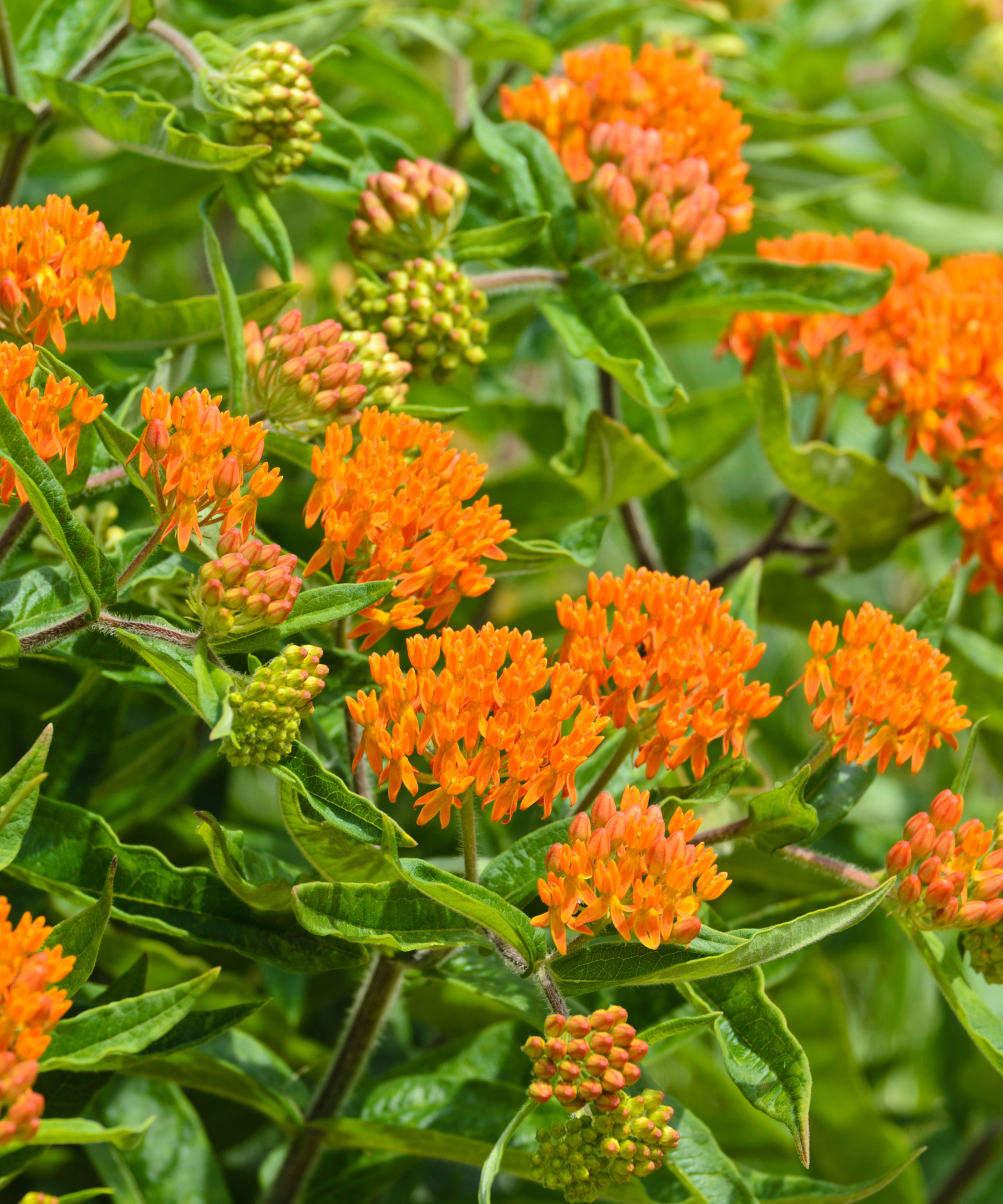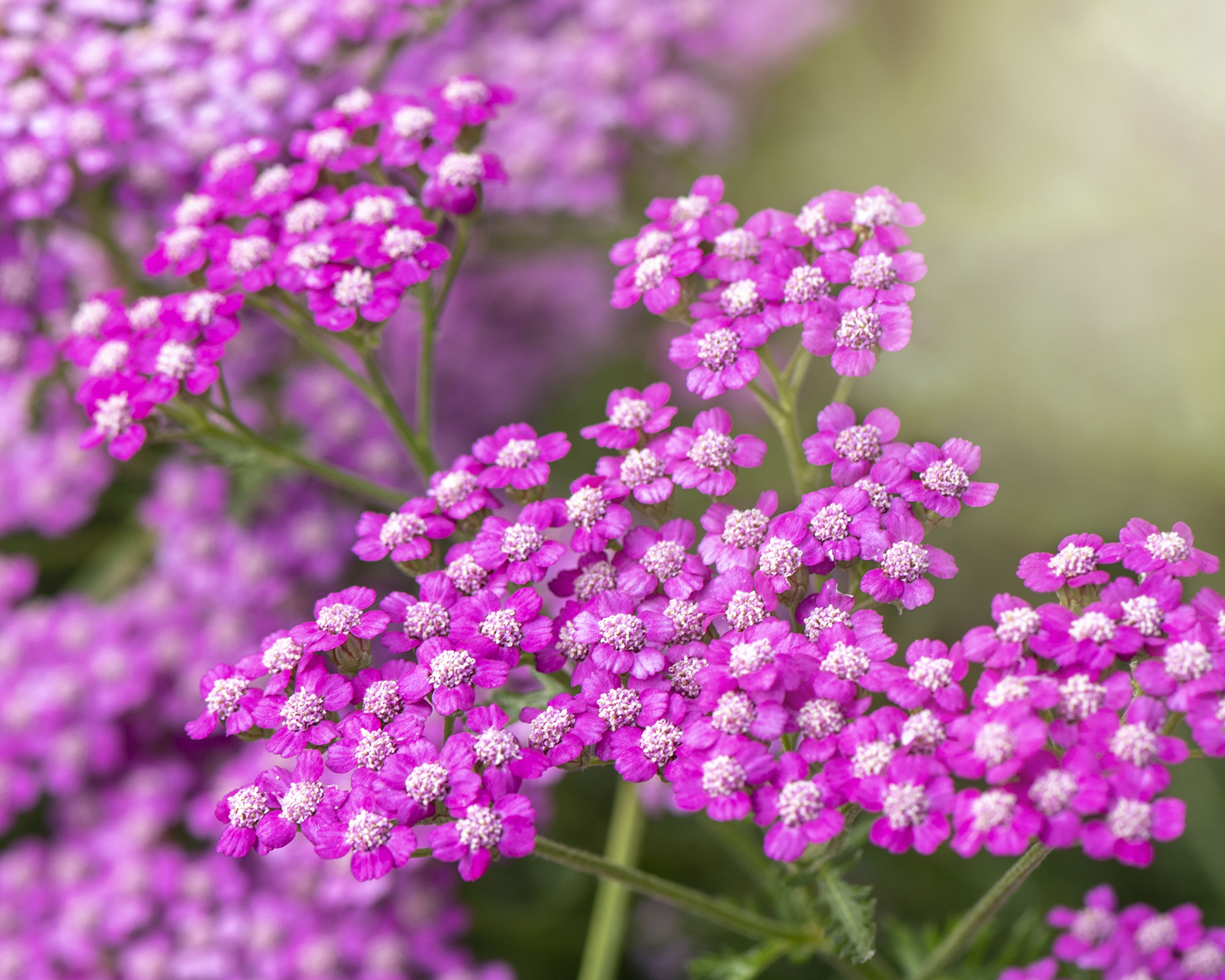Plant Trends 2024 – Experts Reveal 12 Garden Plants You Need To Grow This Year
Discover the must-have plants set to make your garden more beautiful, sustainable, and a haven for wildlife.


Plant trends for 2024 are focused on supporting wildlife and making an impact with minimal effort. Experts predict that bold, impactful flower heads will be big news, with an additional emphasis on old-fashioned blowsy blooms in romantic shades of pink and purple.
In the drive to create pollinator gardens that can survive unpredictable climate changes, there is renewed enthusiasm for native plants that have wide appeal to bees, butterflies, hoverflies, moths, and other beneficial insects, as well as hummingbirds.
However, this year's trend-setting plants need to multi-task, by also being beautiful, adding color and structure to the garden, and having a long flowering period.
Exotic, high-maintenance plants and large manicured lawns are among the garden trends to avoid this year, as we seek to make our gardens more sustainable and lower-maintenance.
So, as you make plans for the gardening year ahead, take inspiration from this expert-curated list of plants to include.
1. Hydrangeas

Hydrangeas are the must-have shrub for 2024. ‘The world is obsessed with hydrangeas!’ says Diane Blazek, executive director at National Garden Bureau.
‘They grow in almost all areas of the country, there are many different types, and there are a lot of newly bred varieties that are unique, more compact, and disease resistant – all of which mean they are easier to grow.’
Sign up for the Gardening Know How newsletter today and receive a free copy of our e-book "How to Grow Delicious Tomatoes".
With four main types of hydrangea to choose from, there is enough versatility to please most gardeners: Hydrangea macrophylla, which includes mophead hydrangea and lacecap hydrangea; Hydrangea arborescens, also known as smooth hydrangea; Hydrangea paniculata, known as a panicle or tree hydrangea; and Hydrangea quercifolia, or oakleaf hydrangea.
‘The number one question everyone has is, “When do I prune hydrangeas?” and the answer is also a question: “Which type are you growing?”,’ adds Diane.
‘Here are the easy answers: Hydrangea macrophylla shouldn’t need pruning; Hydrangea arborescens blooms on “new wood”, so prune in late winter or early spring; Hydrangea paniculata should be cut back, at most, one third to a half in late winter; and Hydrangea quercifolia blooms on the previous season’s growth, so prune right after flowering.’
2. Grandiflora roses

Roses are timeless classics in gardens that are always on trend. However, with its tea-like blooms on long stems, and long continuous flowering period, the grandiflora rose is in the spotlight for 2024.
A cross between a hybrid tea rose and a floribunda rose, the grandiflora rose takes on the best characteristics from each parent, and is also tall and hardy.
One of the latest varieties that is set to be a popular addition to gardens this year is the English Coral grandiflora rose, by Jackson & Perkins.
According to the brand's experts, ‘this new exclusive rose flowers in continuous waves over a long season, from late spring to late fall.
‘Typically borne singly, the 3- to 4-inch cup-shaped flowers are double with 35 to 70 petals. The old-fashioned blooms have a salmon to coral pink color and a slight fruity fragrance. The long, sturdy stems are ideal for cutting.’
English Coral is a tall bush with an upright, modestly spreading habit and good disease resistance. Grandiflora roses work well in single plantings and mixed beds.
3. Frilly petunias

Get ready to embrace a new love of frilly romantic flowers with the rise in popularity of ruffled petunias. However, the latest trend to opt for a darker color adds a sumptuous feel to pots and borders.
Our pick is the stunning Superbissima Dark Purple Petunia, which has frilly dark purple flowers that are dark and heavily veined at the throat.
‘A single grandiflora type, it’s a tender perennial (in USDA zones 10-11) often grown as an annual, that blooms non-stop throughout the season, often to first frost,’ say the experts at Park Seed.
‘Heavy blooming, this petunia blankets its foliage in flamboyant flowers that can reach to over 6 inches in diameter and have beautifully ruffled petals with fringy edges.’
The flowers will also attract bees, butterflies, and hummingbirds to your garden.
4. Butterfly weed

One of the biggest garden trends for 2024 is to plant native species that support pollinating insects.
Mary Phillips, head of Garden for Wildlife and Certified Wildlife Habitat programs at the National Wildlife Federation, believes butterfly weed should be a priority plant for 2024.
‘With clusters of bright orange flowers that bloom from May to September, this Monarch host plant adds radiant beauty and provides essential habitat,’ she says.
‘Its compact, shrub-like structure is well-suited to urban or suburban yards, formal garden borders, and spacious containers. Size at maturity is 1 to 2 feet tall and wide. It's ideal for USDA zones 3-9.’
Ali McEnhill, owner of The Old Dairy Nursery & Gardens, also believes butterfly weed should be a staple in every pollinator garden. 'I delight in watching the caterpillars munch the foliage nearly to the ground each season,' she says. 'Somehow the plants continue to flower anyway. It's deer and rabbit resistant too.'
5. Small-space vegetables

If you have a small garden, a balcony, or even no outdoor space at all, it is still possible to grow vegetables in small spaces. These can be grown in beds and borders, in containers on the patio, or even as indoor edibles.
‘Achieving an abundant harvest from tiny plants is an intriguing concept that is really coming on strong,’ says Diane Blazek.
‘Since taste is just as important as plant size, breeders have introduced some delicious new edibles that taste amazing, have an impressive number of fruits on compact plants, and are super easy to grow in containers and hanging baskets.’
Diane recommends the below plants as a starting point, but there are also a number of ways to increase garden yield if you're already a keen home grower.
- Quickfire pepper – an AAS Winning Thai type hot pepper that grows only 6” tall
- Pot-a-peno jalapeno pepper – an AAS Winner that produces abundantly on plants that grow 12-15” tall
- QuickSnack cucumber – A Green Thumb Award winner that can produce fruits in only 4 weeks from sowing seed
- Tiny Temptations Orange tomato – Deliciously sweet orange cherry tomatoes on a bushy 18” plants
6. Compact buddleia

Also known as the butterfly bush, buddleia has long been prized for its ability to attract butterflies and other precious pollinators to gardens.
Unfortunately, as buddleia typically grows from 6 to 12 feet (2-4m) tall with a spread of 4 to 15 feet (1-4.5m), it is not an option for small yards, and is even considered an invasive plant in many regions.
However, thanks to the latest crop of compact buddleias, the butterfly bush can still be an attractive option for gardeners in the year ahead.
Linda Vater, acclaimed garden designer and expert for Butterfly Candy Buddleia, recommends Butterfly Candy Lil’ Grape for its abundant blooms.
'A remarkably compact low-grower, this flower-packed variety of buddleia matures to just 2-3’ tall and wide, making it the perfect choice for small-space pollinator gardens, porch plantings, and containers,' she says.
'Hailed as an award-winner for its saturated dark purple flowers and compact size, Lil’ Grape is water-wise once established and blooms repeatedly from late spring through fall. It's hardy in USDA zones 5-10.'
7. Colorful yarrow

‘Common yarrow (Achillea millefolium) is a must in any natural landscape,’ says Ali McEnhill. 'It is deer resistant, drought tolerant, and attractive to butterflies and other pollinators.'
Yarrow care is so easy that the plant is virtually maintenance-free. It doesn't need to be fertilized and only needs to be watered during severe drought. The plant will even grow in very poor dry soils with low fertility.
Though commonly thought of as white or pale pink, yarrow comes in some striking colors. ‘My favorite cultivar, ‘Cerise Queen’ has cerise flowers and beautiful feathery foliage,' says Ali.
8. Asters

With our increasing desire to make the most of the garden all year round, it's vital to look for plants that provide color and interest in every season.
'Asters are late-blooming, hardy perennials. They will add a bright and showy lavender-blue pop of color when most gardens are starting to wind down,' says Mary Phillips.
'Filling your garden with a glowing charm well into fall, asters also provide much-needed nectar to migrating Monarch butterflies, and serve as host plants to an abundance of native bee species.
Ideal for zones 3-8, asters' size at maturity ranges from 12 inches to 4 feet. To find an aster species native to your home, check out the National Wildlife Federation's Native Plant Finder.
9. Blight-resistant boxwood

Boxwood is such a versatile evergreen shrub that can be used for everything from hedging to topiary and elegant containers. However, it has declined in popularity in recent years due to the dreaded boxwood blight, which ruins the plant's appearance.
'In recent years, boxwood blight has become a significant threat to boxwoods across North America. Now more than ever, selecting new plants that can survive and thrive in areas with blight is of paramount importance,' says Linda Vater.
She recommends gardeners invest in the new Better Boxwood Skylight, winner of the 2024 National Garden Bureau Green Thumb Award. 'Debuting in 2024, the new Better Boxwood collection is the first collection of scientifically bred blight-resistant boxwood on the consumer market.
'Skylight is a faster-growing variety that makes beautiful mass plantings, medium hedges, and balls. With attractive medium green leaves, Skylight is hardy in USDA zones 5-9 and reaches 6-8’ high by 3-4’ wide when mature.'
10. Plants for hummingbirds

'We hear so much about plants for pollinators, but hummingbirds have their own unique plant needs,' says Diane Blazek.
'Brightly colored, tubular flowers make the perfect hummingbird buffet. The shape of the bloom and its location is just as important as its color. Grow hummingbird-friendly plants where it’s easy for the birds to hover and savor a sip of nectar.'
Diane recommends the salvia Hummingbird Falls (pictured), which has stunning lavender-hued flowers. 'Also try planting lupine or columbine for spring blooms that the hummingbirds love,' she says. 'There are many summer blooms but a few suggestions are angelonia, lantana, mandevilla, petunia and buddleia.
11. Native ornamental grasses

In 2024 there will be increased interest in planting native ornamental grass due to myriad benefits. Native perennial grasses require less watering, fertilizer, and pesticides than regular grass, and add unique colors, and textures to the yard.
They also create safe havens for valuable wildlife including birds and small mammals.
Ali McEnhill particularly recommends bluejoint grass (Calamagrostis canadensis). ‘Bluejoint grass is most often found in marshes, open woods, meadows, and other wet locations across the country,’ she explains.
‘I love it for its hardy nature, blue-green leaves, silvery flower spikes, burgundy-tinted autumn foliage, and ability to spread rapidly. It is a great choice for erosion control.'
12. Single-flowered roses

With an ever-increasing focus on planting for pollinators, gardeners will be turning towards single-flowered roses.
Though often overlooked in favor of more elaborate double-flowered roses, single-flowered roses have a simple beauty all of their own. They are also significantly more valuable to pollinators, who can more easily access the flowers' pollen and nectar.
Heidi Mortensen, rose portfolio manager for Star Roses and Plants, recommends Easy Bee-zy Knock Out. ‘It continuously produces very bright, yellow blooms with long-lasting color, and offers a light citrus fragrance and a single petal display that is alluring to pollinators,' she says.
‘Plant individually, in a group or mixed with other perennials, shrubs or roses, in zones 4-11.’

Melanie is an experienced gardener and has worked in homes and gardens media for over 20 years. She previously served as Editor on Period Living magazine, and worked for Homes & Gardens, Gardening Etc, Real Homes, and Homebuilding & Renovating. Melanie has spent the last few years transforming her own garden, which is constantly evolving as a work in progress. She is also a passionate organic home grower, having experimented with almost every type of vegetable at some point. In her home, Melanie tends to an extensive houseplant collection and is particularly fond of orchids.